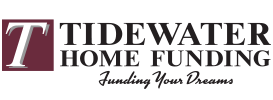
Budgeting is one of the key concepts to improving personal and family wealth. Creating a plan to increase savings, emergency funds and prep for long-term needs is essential to everyone, but few families are doing this consistently. Budgeting is a habit.
Find the right type of budget that works for your family. Here are some of the most popular budgeting options for families to increase wealth long-term.
Envelope Budgeting
The envelope budget focuses on assigning money to specific categories and not spending any more than what is in each “envelope”. This was a popular way of saving prior to online banking and payments. Although effective, this may not be the best option for those who have issues controlling excess spending once the allotted money is gone. If the family is able to manage this correctly, using apps like Mint, Every Dollar and You Need A Budget are great ways to set up virtual “envelope budgets” for fund management.
50/30/20 Budgeting
This method focuses on goals set by the family. The 50/30/20 percent budgets are based on a family’s after-tax income.
- 50% for “needs”: Living expenses including food, rent/mortgage, transportation, insurance, and utilities.
- 30% for “wants”: Entertainment, dining, monthly subscriptions, and shopping.
- 20% for savings & debt: Paying off debt, building emergency funds, savings accounts, 401ks, IRAs and other similar accounts.
Zero Dollar Budgeting
This method has families planning how to spend every dollar earned each month down to the penny. If a family has trouble controlling spending, this is a great way to wean overspending from the family and allows all to see the pain areas. This type of budget takes increased attention from the main controller.
5-Category Budgeting
This separates the entire budget into 5 specific categories:
- Housing (includes mortgage or rent, HOAs, and maintenance expenses): 35%
- Living expenses (groceries, utilities, wants): 25%
- Transportation: 15%
- Savings: 10%
- Debt Repayment (student loans, credit cards, etc.): 15%
- Once repaid, this category should be reallocated towards savings
Tips to Improve Budgeting
No matter how good a person is with their finances, having checks and balances in place that will assist in growth is never a bad thing. Here are some great tips to improve any budgeting tactics.
- Online Software: In the fast-paced, tech-obsessed world, having the budget at your fingertips can do nothing but improve the management of cash flow.
- Check Frequently: Don’t wait until after a wild weekend to check and see how far off track the budget is. Check frequently and adjust where appropriate no matter if the results are looking good or bad.
- Cash-Only: This is extremely helpful for those on the Zero Dollar Budgeting or Envelope Budgeting strategy. Using cash to pay for “wants” can help constrain overspending. The theory is a person cannot spend what they do not have on hand.
- Auto-Payments: It is harder to get off track if the person wakes up and funds for specific needs have already been pulled. Set needs on auto-payment and high priority wants to ensure these are paid before other funds are spent on unnecessary items.
- Budget Meetings: Use a weekly family dinner night once a month to discuss the budget among all contributing members of the family. This will ensure there are progress reports and adjustments that are amenable to all occurring.
Take these great tips and conquer the wealth deficit with ease!

